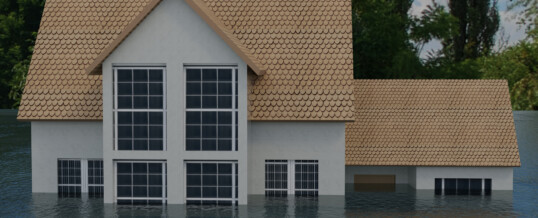
Flooding is one of the most chaotic and frustrating situations you’ll ever experience as a homeowner. Often, the damage is very widespread. And it must be addressed immediately or else it spreads even further and encourages mold growth.
Even worse, this problem is quite common in homes that have a basement. For one thing, underground moisture near your foundation can leak into your basement from the outside. Plus, flooding in other areas of your home will flow downward and collect in your basement.
We know how overwhelming a flood can be. But here’s the good news.
Water damage restoration is possible. And we’re going to teach you everything you need to know about it in this guide. Read on to find out more.
1. Turn Off the Electricity
First, if the floodwater is still present, you need to neutralize the risk of electric shock. To clarify, if any electrical outlets or plugged-in appliances are submerged, the water is electrified. Anyone who touches the electrified water will be electrocuted, possibly to death.
As long as you can safely reach your circuit breaker, go to it and turn off the electricity to your basement. If the circuit breaker is in the basement, don’t risk trying to reach it. Instead, call your electric company and have them cut off your electricity temporarily.
2. Stop the Flooding at the Source
If the flooding is still happening, you must stop it at the source (whenever possible). For instance, flooding caused by a plumbing disaster can be stopped by shutting off your home’s water main. Then, call a plumber to repair the leaky pipe.
Or, if the moisture is coming in from a window, or a crack/leak in the basement wall, get it sealed up properly. Whatever’s causing the water damage in your basement, get it repaired before addressing the other steps on this list.
Of course, flooding due to natural causes, such as a nearby river overflowing, can’t always be stopped by individual human efforts. For such a flood, you’ll have to wait until it subsides naturally or until disaster relief services address it.
3. Call Your Insurance Company
Unfortunately, flood damage isn’t usually covered under a standard homeowner’s insurance policy. Hopefully, though, you’ve opted for this extra coverage prior to the flooding.
To find out for sure, call your insurance company and report the situation. Whether the damage is covered or not, they should have some instructions for you to follow. Furthermore, if the damage is covered, you’ll need to follow their instructions precisely so that you don’t accidentally void these insurance benefits.
4. Call a Water Damage Restoration Company
After these basic steps, the best thing you can do is to leave the rest to the professionals. Hiring an experienced water damage restoration company is your best chance for a successful basement restoration. They have the tools and the expert knowledge required to do the job right.
This is especially important for making sure the affected areas are dried quickly enough. Anything that’s not fully dried within 48 hours will most likely start growing mold. This is likely to happen if your amateur restoration attempts are insufficiently thorough.
5. Remove the Water
A professional water damage restoration service will use a powerful vacuum to remove high levels of water. If you have a wet or wet/dry vacuum, you can begin removing the water yourself before the pros arrive. Next, the water must be mopped up and/or towel-dried.
6. Discard Irreparable Items
Upholstered items and carpeting should be removed and thrown away. These usually cannot be restored.
Plus, there will be moisture trapped beneath the carpeting. Removing the carpet is the only way to make sure this moisture is dealt with.
In many cases, the water-damaged drywall will have to be removed and discarded as well. This is another reason why it’s important to work with basement restoration professionals. They know how to evaluate the extent of the damage and what needs to be done.
7. Dry/Dehumidify the Basement
A fan should be used to blow the moist air out of the basement. Although, a dehumidifier works even better for this purpose.
Your centralized air conditioner (but not the heater) will dehumidify the air, too. If you have centralized AC, run it as much as you can. To be clear, though, a swamp cooler AC does not dehumidify.
8. Waterproof Your Basement
Once the damage is restored, you must prevent future water damage. Do this by getting a basement waterproofing system installed.
These systems ensure that excess moisture is directed safely away from your basement so that it won’t cause any damage. The ideal system for your needs depends on the size of your basement, the weather in your area, and other factors. Contact a qualified basement waterproofing service so they can inspect your basement and explain your options.
9. Choose Waterproof Flooring
Lastly, if you’ve had to remove your carpeting due to flood damage, replace it with a more waterproof flooring material. Tile flooring or sealed concrete are good options for this.
Likewise, don’t store water-sensitive items in the basement anymore. These steps will minimize the damage done by any future flooding.
Do You Need Basement Water Damage Repair?
Never hesitate when your home incurs water damage. Get the professional basement restoration help you need right away.
Armored Basement Waterproofing is locally-owned, veteran-owned, and family-owned. With over 20 years of experience in water damage restoration and basement waterproofing, we’re highly qualified to meet your needs. Contact us here to inquire about our top-notch basement water damage repair services and/or schedule your free inspection.
ShareDEC
